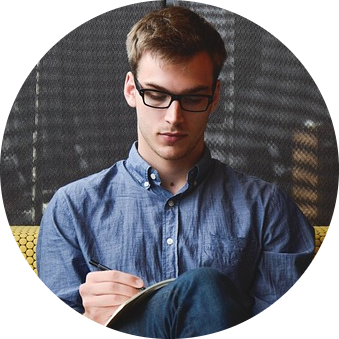In today's era of creativity and technology, deepfake AI is both creative and worrisome. This technology uses deepfake video and pictures to manipulate the content by replacing faces. Developed for entertainment purposes, deepfake AI has raised some ethical and security concerns. Thus, knowing what is deepfake AI and how to detect it is important. Get to know about concern of deepfake to distinguish between truth and manipulated content.
In this article
Part 1. What do You Know about Deepfake Technology?
Whether you are a beginner or professional exploring the realm of deepfake, you might wonder “What is deep fake technology.” Deepfake technology is a revolutionary form of artificial intelligence (AI). It can transform or manipulate videos and images to show individuals performing actions they did not actually do. This method uses deep learning algorithms to replace and change the features with authenticity.

Purpose of Deepfake Technology
Deepfake AI was developed for creative and entertainment purposes to transform basic data into compelling content. With technological innovation, deepfake has evolved and is used for numerous purposes besides manipulating content, which is mentioned as follows:
- Entertainment: For entertainment, you can use deepfake technology to insert yourself into movies or music videos to create engaging content for your media.
- Visual Effects: This technology makes achieving complex visuals easier. You can apply effects to your videos seamlessly without using CGI, making this innovation a cost-effective tool in filmmaking.
- Education: In terms of educational purposes, students can now simulate historical figures delivering speeches or boost virtual learning experiences with engaging content.
- Research: In research, this technology can aid researchers in studying human behavior, facial expression, and speech patterns, assisting in communication studies.
- Digital Art: If you are an artist, use deepfake features to transform simple images to create innovative pieces, exploring new forms of digital art.
- Awareness and Prevention: With deepfakes, you can raise awareness about the manipulated content, prompting discussions on digital literacy and the ethical uses of technology.
Part 2. What Are Some Defining Characteristics That Helps Detect Deepfakes?
Deepfake detection is critical for both basic and professional systems in preserving data and media integrity. This helps prevent the spread of wrong information and protects people from potential harm or defamation. Plus, it maintains trust in digital content to ensure that authentic information is reliable in today's interconnected world. Now that you know what a deep fake is, here are characteristics that will help you in detecting deepfake:
1. Inconsistencies in Facial Features
If you want to detect deepfake, seek for inconsistent facial expressions such as unnatural movements, blurring of edited areas, or uneven lighting conditions. These differences may be small but are visible upon closer inspection to reveal the changes made through AI manipulation.
2. Unnatural Eye Movements and Blinking Patterns
Other than irregular facial features or expressions, deepfake videos generated by AI have unnatural eye movements or irregular blinking patterns. Unlike human behavior, deepfake creations fail to synchronize eye movements with facial expressions or make repeated blinks that seem mechanical rather than natural.
3. Artifacting and Pixelation
Sometimes, deepfakes have signs of visual distortion around edited areas where you have altered facial features or backgrounds. These visual distortions can appear as uneven textures or blurry outlines that don't match the rest of the video quality.
4. Audio-Visual Discrepancies
Inconsistencies in deepfake video are another sign to detect deepfake generations. In any deepfake video, audio-visual mismatches like lip sync errors, where spoken words fail to align with lip movements, can also help detect deepfakes. Discrepancies in background noise are also the major indicator in the manipulated audio tracks layered onto fake videos.
5. Contextual Anomalies
The content is shown originally in any content, while deepfake videos lack valid context or deviate from the original setting or script. These deviations may include unrealistic backgrounds, unusual behavior that contradicts known human characteristics, or unlikely situations that go against logical expectations.

Part 3. How Are Deepfakes Ethically Alarming?
In past years, AI deepfake technology has reached its new level of creating AI-generated manipulated videos, audio, and pictures. With its rapid usage, this innovation has raised alarming ethical concerns, too. Here is the breakdown of ethical alarms associated with deepfake meaning:
- Misinformation and Deception: Deepfakes can be created to mislead the videos that misrepresent events or statements, leading to the spread of wrong information. This can affect the authenticity of any media, making it difficult for people to distinguish between truth and false.
- Impact on Privacy and Consent: Most of the time, deepfakes are created without consent, violating the privacy of individuals. There are many cases where people tried to make deepfakes of famous celebrities, causing significant harm to their privacy and reputation.
- Potential for Harassment and Defamation: With this technology, deepfakes creators can easily harm the reputation of individuals, leading to harassment and defamation. There are cases where individuals were being harassed as their pictures were used in a wrong manner, affecting that person’s reputation and personal life completely.
- Manipulation and Coercion: Besides harassment and misrepresentation of any individual’s image, deepfakes can also be used in political campaigns to spread false information about the opponent. Not just that, these deepfakes have the ability to coerce individuals, like forcing them to be completely silent in situations where power dynamics are imbalanced.
- Cultural and Societal Impact: This rise of deepfake can lead to cultural shift where people detach themselves from any culture because of any misconception, impacting social norms and social bonding. Not just that, it can affect the trust in all types of media, increasing the risk of skepticism and unwarranted suspicion among the public.

Bonus Part. Make Deepfakes Under Ethical Boundaries With Virbo
Deepfakes can be ethically alarming and can affect one's reputation if not used properly. Therefore, getting hands on a platform that ensures ethical consideration is necessary. Hence, Wondershare Virbo has introduced an innovative deepfake technology with values-based contemplations, offering you secure ways to create deepfake videos seamlessly.
Virbo is basically an AI-powered platform with wide range of features to create compelling videos. It comes with AI scripting, AI translation and AI avatar through which you can create engaging and fun AI videos. With the AI-talking photo feature, you can easily create compelling deepfake videos or images in a few taps. Above all, this feature ensures a safe and secure way to generate images without violating ethical considerations.
How to Clone Your Voice? | AI Voice Cloning
Step-By-Step Process To Create Unique Deepfakes With AI Talking Photo
Here is how you can create deepfakes with Virbo, ensuring ethical consideration during the image generation procedure.
Step1Login to Virbo and Upload an Image To Create Deepfake
Launch the Virbo app across your browser and head to the “AI Talking Photo” features form the “More AI Tools” to initiate the deepfake image generation process. Once done, you will be directed to a new window to upload the image by tapping “Upload Photo” button. You can also select an option available across the window and click “Next” to initiate the process.

Step2Add Script to the Image Through AI
Once your image is uploaded, locate the “Input Text” section and hit the “AI Script” or “Audio Script” buttons to let AI make a script for your image.

Step3Add Your Voice to the Deepfake Images
Beneath the “Input Text” section, navigate to “Choose a Voiceover” to add your own voice to the image. On the pop-up window that emerges, access the “Me” tab and click the “Clone a new voice” button for uploading your personal voice. Following this, upload the audio file you recorded and click “Create Clone” to generate a personalized voice that can be used as a voiceover for your talking photo.

Step4Personalize and Save the Image Generated
Head back to the uploaded image and customize settings like pitch, volume, or subtitles from the “Choose a Voiceover” section. Once done, hit the “Create Video" button and save your image in the desired format.

Conclusion
Deepfakes are undoubtedly accessible ways to manipulate images into compelling content. However, deepfakes can lead to misrepresentation sometimes. Therefore, to build trust in media and to prevent the spread of misinformation, detection of deepfakes is crucial. You’ve comprehensively understood what is deepfake AI, why they are alarming, how you can detect them, and how ethical deepfakes can be created with Virbo.
*Note: The AI voice cloning technology mentioned in this page is for lawful use only. Unauthorized replication or commercial use of others' voices is prohibited. Violators will be held legally accountable.
FAQ
-
Can I track deepfakes easily?
Tracking deepfakes can be hectic if you are not using specialized tools. These tools are designed to be highly realistic. However, you can use the latest software and AI algorithms as they are also helpful in detecting deepfakes with high accuracy. -
How deepfakes are harmful?
Deepfakes are harmful in spreading misinformation, manipulating public opinions and defaming any individual. Besides that, it can also be used for various fraudulent activities, affecting the security and privacy. -
Through which facial features I can identify a deepfake with Virbo?
Detecting deepfakes with Virbo is easy by seeking inconsistencies in facial movements, mismatched lighting, inconsistencies in facial movements, or pixilation around the edges of the face.



